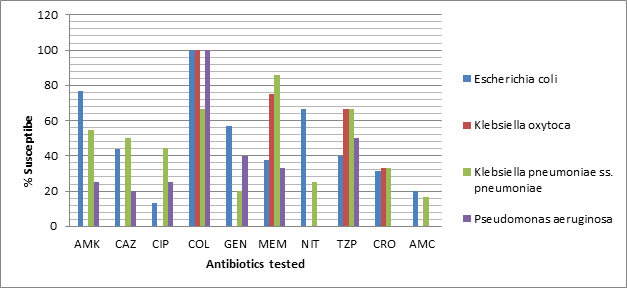Urinary Tract Infection and Antibiotic-Resistant Patterns of Isolated Bacteria in Geriatric Patients.
Clinical Medicine And Health Research Journal,
Vol. 4 No. 2 (2024),
11 March 2024
,
Page 801-805
https://doi.org/10.18535/cmhrj.v4i2.320
Abstract
Age-related risk factors influence the prevalence of urinary tract infections (UTIs) in older people. Therefore, early detection is important to prevent adverse consequences. A retrospective study was conducted on 206 geriatric patients (65 years old and above) who were seen in various clinics at University College Hospital, Ibadan. There were 138 men (67%) and 68 women (33%) in total. A significant growth of >105 cfu/ml of bacteria was found in a total of 44 (21.4%) samples. Escherichia coli was the most common pathogen isolated (40.9%), and it was followed in order by Klebsiella pneumonia (29.5%), Pseudomonas aeruginosa (13.6%), Klebsiella oxytoca (9.1%), and Proteus mirabilis (6.8%). The distribution of UTI by gender was statistically significant (P = 0.009), with men (33%) having a higher prevalence than women (11%). Most of the isolated bacteria were resistant to the first line of antibiotics, with Escherichia coli showing the highest level of resistance to the commonly prescribed antibiotics. There is a need to step up the campaign against the indiscriminate use of antibiotics to prevent a rise in antibiotic resistance.

How to Cite
Download Citation
References
- Article Viewed: 0 Total Download


